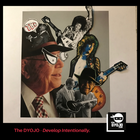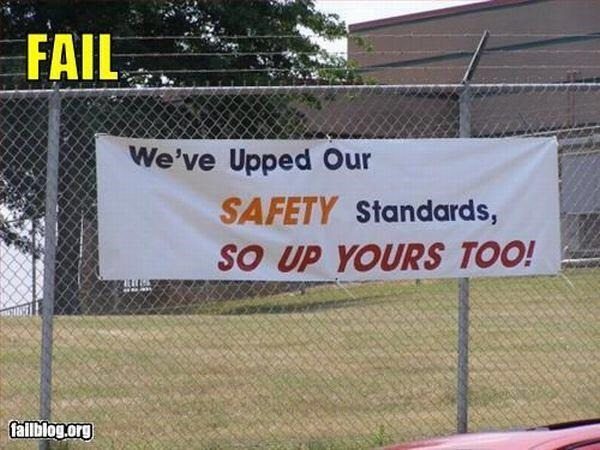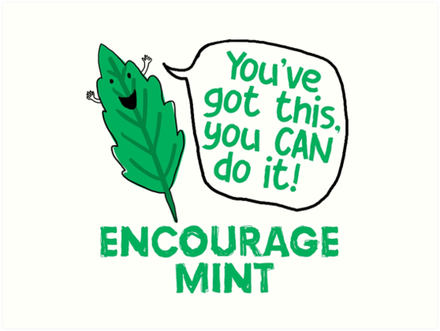 When guitar manufacturing icon Gibson Guitars was on the ropes they called an audible, hiring an unknown outsider who transformed the company by listening to his team. When was the last time you watched Undercover Boss? I became aware of the show in 2013 when the company I was working for announced our CEO would be on the show. My co-workers and I thought this ought to be good, being that employees in our property restoration business respond at all hours of the day (or night) to various damages including water, fire, mold and blood. How would our CEO, who started in the trenches, respond to the everyday challenges that our technicians faced as he interacted with our counterparts in other parts of the country? Long before Undercover Boss popularized the concept of executive level leaders donning terrible wigs and getting their hands dirty in their own operations, there were innovative leaders like Ted McCarty. Who is this Ted Mc-WHO-ty? We will answer that question but before we do let’s take a brief walk through the time period and the organization to which he was called, the iconic guitar manufacturer, Gibson guitars. If you have observed any value from leaders going undercover in their businesses, wait until you see what Ted can do by being an out-of-cover manager and listening to his employees. Gibson Guitars in the pre-McCarty era If you know anything about rock and roll, would you be surprised to know that Gibson had initially passed on the option to usher in the dawn of the solid body electric guitar? Could you imagine Jimmy Page of Led Zepplin or Slash of Guns N’ Roses without their Les Pauls? In 1930, Les Paul brought his ugly little innovation “the log” to the Michigan based manufacturers and they wholeheartedly rejected his idea. An inventor who wasn’t yet a player in the instrument market, Leo Fender, soon rose as the first to market in the absence of Gibson’s collaboration with Mr. Paul. Even though Leo was first, neither Fender nor Gibson would be strumming for success in this market segment for several years. At the turn of the decade, Gibson wouldn’t even be producing instruments at scale as they transformed their factory into a wartime production line. World War 1 officially ended in 1918, but things in Europe and abroad were still simmering with tension. Many point to September 1, 1939 when Adolf Hitler’s German forces invaded Poland as the final straw that brought the reluctant nations of England and France back into the fray of opposing Nazi expansion. For two years, up until December of 1941, the United States was resolute to avoid participation in the Allied efforts of World War 2. The bombing of Pearl Harbor in Hawaii on December 7, 1941 by the Japanese quickly changed that decision. “Yesterday, December 7, 1941 a date which will live in infamy the United States of America was suddenly and deliberately attacked by naval and air forces of the Empire of Japan.” — President Franklin D. Roosevelt A proud history of working women rising to the challenge By early 1942, The United States was in full swing to mount a defense against the advancing threat of a Japanese invasion as well as assisting their Allies to recapture land taken by the Axis forces in Europe. Gibson guitars, like many other manufacturers in the States, transformed their operations into wartime production plants. At their headquarters in Kalamazoo, Michigan, Gibson hired over 200 women between 1942 to 1946 to make munitions. The Kalamazoo Gals were also responsible for producing upwards of 25,000 of the highly sought after Gibson “Banner” guitars. Necessity gave hard working women an opportunity to display their abilities in the workplace. When the world went to war, even those who were not fighting on the front lines were enlisted to help the military efforts. Our allies in England set the example as, “The British government mobilised civilians more effectively than any other combatant nation. By 1944 a third of the civilian population were engaged in war work, including over 7,000,000 women.” Gibson, joined factories across the Allied nations, to produce wood and metal products for the wartime effort. Gibson Guitars in a downward spiral Chicago Musical Instruments (CMI) purchased Gibson Guitars in 1944. Mauric Berlin soon discovered that there was trouble in Kalamazoo. He was sitting at the helm of a company that had an iconic image but was hemorrhaging upwards of $10,000 a month (estimated equivalent to $175,000 in today’s dollar). Berlin called upon a former business acquaintance, Ted McCarty, who was an engineer by trade and had been working for the musical manufacturer Wurlitzer for the last 12 years. McCarty had hit his growth ceiling at Wurlitzer and was ready for a new challenge. Whether Berlin knew it or not, Ted was ready to sign an agreement to become the assistant treasurer with the Brock Candy Company. Maruric was available for lunch and hungry for talent. By contrast, Brock’s decision making ability had stalled out when the owner could not be reached while he was on vacation. In that void of decision making ability, the Candy Companies lapse became the first break for Berlin and the future of his new acquisition at Gibson. Gibson was quicker to get the pen into the hand of emerging talent than Brock, which brings up a few nuggets for those in a position of leadership to take note of:
“We decided that every day we would go through the factory and find one operation that we thought could be improved.” — Ted McCarty on his relationship with John Huis Listening to and empowering employees might just work McCarty was hired by Gibson in 1948, the same year that Leo Fender started producing his Broadcaster solid body electric guitar. Ted’s first visit was back to the production floor where many of the issues revolved around poor management by then general manager Guy Hart. If morale continued in its low state, the transformation Ted was orchestrating would not generate any harmony. His visits at the ground level allowed him to identify a 15 year employee, John Huis, who expanded his understanding of the problems while also helping Ted to identify solutions. Listening to employees enabled McMarty to make progress in the process of improvement. Ted believed that there were too many foremen and without a central superintendent who was responsible for oversight of all the sections there were glaring inconsistencies. This lack of clarity was prohibitive. McCarty promoted Huis to this new role and Hart resigned. The overlooked diamond in the rough was promoted and the cancer (Hart) was removed. Freeing Ted to move on to bigger issues within the Gibson organization and empowering Huis to improve the production systems while establishing a strong working environment for the team. “We were growing, from 150 employees, growing and growing and growing, and we had about 1,200 when I left in ’66.” - Ted McCarty on growth When leaders empower their people, everyone wins Not only did Ted listen to employees, he Ted believed that being friendly with the staff was important. He even went so far to make it his goal, with only 150 employees, to remember the names of individuals as well as something significant about them as people. This commitment transformed the attitude of the employees towards management. McCarty and Huis continued to collaborate and decided to walk the floor daily, “To find one operation that we thought could be improved (Bacon, 2018).” Ted understood the impact of leading by example, to hold himself and his core leaders accountable for the change in culture as well as the commitment to growth. By identifying issues, taking action and empowering people, McCarty and Gibson went from bleeding money in March to making a profit by May of 1949 (Price). Ted was Vice President within a year and President of Gibson by 1950. How refreshing is it to see that a leader who is committed to making their organization a good place to work can find the means to revolutionize a dying brand? Ted had clarity, consistency and accountability working in the organization. He was enjoying his work, employees were thriving in a positive environment and the organization was firing on all cylinders. “I was working with the rest of the engineers, and we would sit down, like in a think tank, and we would talk about this guitar: Let’s do this, let’s try that.” — Ted McCarty on innovating with his team Once the core of the organization is healthy, the possibilities are limitless for innovation With Gibson back in the business of making guitars it was now time to improve the position of the business in their market. They weren’t the first to the market for the solid body electric guitar but Ted was instrumental in building an innovative culture. They started by partnering with Les Paul to be the public face of their electric guitar which bore his name and came to market in 1952. Ted pioneered many of the features and worked out the deal with Les on a napkin, a deal that held when reviewed by the lawyers. Ted McCarty was never a musician and yet he had a 60 plus year career with three successful companies in the industry and is regarded as a key figure in the golden years of Gibson as well as the evolution of the solid body electric guitar. How was Ted able to leave such a mark in the industry? When he wanted to fix the factory, he listened to the employees. So, he took the same approach to revolutionizing the guitar — listen to guitar players. His team focused on quality and made adaptations that addressed the needs of musicians. Even though Gibson had passed on the guitar innovation back in the 1930’s, after Fender brought his unit to the market there were many manufacturers who still thought it was just a fad. Ted was undeterred when his competitors told him, “Anyone with a bandsaw can make a solid body guitar. Bandsaw and a router, that’s all you need.” Ted sought ways to innovate without sacrificing the quality that had built their company’s brand. “Fender was talking about how Gibson was a bunch of old fuddie-duddies…I was a little peeved. So I said, ‘Let’s shake ’em up.’ I wanted to come up with some guitar shapes that were different from anything else.” — Ted McCarty on maintaining a competitive edge Unleash your strengths and allow others to do the same Ted left splashes of his fiercely competitive nature. One of the signature features of the initial Gibson Les Paul was the arched top which Ted incorporated primarily because he wanted, “To do something Leo Fender couldn’t do.” When rival Fender called Gibson out for it’s archaic approaches to the market, McCarty made it his personal mission to launch designs that had never been seen. The Flying V, Explorer and Moderne came out of this competitive drive, which weren’t commercially successful at the time but have experienced periods of popularity in more recent years. McCarty developed key collaborations from within and without to the benefit of Gibson. He also was able to guide the successful acquisition and integration of their competitor Epiphone to drive his vision of expanding their capacity to compete in the market for bass guitars. McCarty led Gibson from hemorrhaging money to consistent profitability which steadily increased 15 times. His sales grew by 1,250 percent, the work force expanded tenfold and production went from 5,000 to 100,000 guitars per annum. “I went there [to Gibson] on March 15, we lost money in March, we lost money in April, we made money in May, and we made it for the next 18 years — never had a loss. I left there in ’66, when I bought this company from Paul Bigsby.” — Ted McCarty on his achievements at Gibson Old dogs don’t always need new tricks McCarty continued his habit of walking the floor at Gibson where he could see the issues clearly. In later years, McCarty saw that trouble with leadership was on the horizon and he decided to look for opportunities elsewhere. Good talent can slip through your organization’s fingers in many forms including slow hiring processes, poor engagement, overlooking internal talent and devaluing contributors. Ted and then Vice President John Huis resigned at Gibson in 1966 and started a new venture as owners of Bigsby Accessories, Inc. While Gibson and McCarty was not a relationship that endured the test of time, his relationship with Huis was. It should be no surprise that McCarty at 56 years old still had fuel in the tank and was successful at Bigsby, implementing many of the same core values in the new company. He was brought out of retirement by Paul Reed Smith who credits Ted as being a critical mentor to his own success even though Ted was legally blind by the time they met in the 80’s. As we said, while you may have never heard about Ted McCarty, there is much to learn from his story that can be applied to any organization. Ted is no longer with us but you can still glean key takeaways from the methods of Mr. McCarty in transforming an organization into a competitive force in the market. Six timeless keys for building success from Ted McCarty’s playbook:
Additional Resources from The DYOJO:Pro vs. Joe is the podcast with a podcast, brought to you by The DYOJO Podcast. Bryan the "Joe" and Jon the "Pro" share their unique perspectives on entrepreneurship, property restoration and growing as a leader.
2 Comments
Build a better culture by mastering the small things Have you had donuts at a company meeting? Were they crusty grocery store donuts or did they who brought the donuts put some effort into bringing a confection of quality? When you are in a position of leadership, culture is not something magical that you pull out of your bag of management tricks, it is you. Therefore, what you do matters. The quality of your donuts matters. You are your culture. If you bring your people together for an “important meeting” but are too cheap to bring in some snacks, your culture sucks. If you put some thought into your meetings but the quality of how you serve your people in that setting is less than the standards you claim that you serve your clients with, your culture is mediocre. Conversely, just because you bring the most expensive donuts to a meeting does not instantly mean you have a killer culture. I can recall one of my managers telling me, “Be careful about bringing donuts to the meeting, they will come to expect them.” My first thought was something along the lines of, “God forbid our employees came to expect ten dollars worth of dough every time we pulled them into a meeting.” My second thought was, “Who hurt you.” If you expect that your team will love you just because you bring donuts, you are disconnected with the working people.
“Great things are done by a series of small things brought together.” - Vincent Van Gogh Safety must be a core practice of any organization that wants to recruit, develop and retain good employees. Building a culture of safety Building a culture of safety When an organization builds a culture of safety, they create an environment that communicates care for the employees. A key building block in the safety paradigm is the incorporation of personal protective equipment (PPE). As the governmental agency that is responsible for educating and overseeing workplace safety, OSHA has advised, “If PPE is to be used, a PPE program should be implemented. This program should address the hazards present; the selection, maintenance, and use of PPE; the training of employees; and monitoring of the program to ensure its ongoing effectiveness.” A culture of safety saves money by keeping an organization out of trouble and keeping employees on the job. According to OSHA, “It has been estimated that employers pay almost $1 billion per week for direct workers' compensation costs alone.” In case you missed it - that was per week. This means employees are getting injured at a rate that should not be acceptable and there is great incentive for companies to invest in improving their approach to safety. Let’s review eight keys to building a culture of safety, starting with personal protective equipment: 1.What is PPE PPE stands for Personal protective equipment. The employer is required to identify the hazards that exist in relationship to the scope of work that they are sending their employees out to complete. In the identification of those hazards the employer must provide training to mitigate those hazards as well as personal protective equipment to ensure safety of employees. To be clear, personal protective equipment does not remove all hazards for employees nor does it alleviate all liability for workplace safety for employers. OSHA states, “Controlling a hazard at its source is the best way to protect workers. However, when engineering, work practice and administrative controls are not feasible or do not provide sufficient protection, employers must provide personal protective equipment (PPE) to you and ensure its use.” Providing PPE to employees is one ingredient in the safety cake, to get the full taste there must be an effective training mechanism for helping employees to identify hazards as well properly utilize the equipment. 2.What is OSHA OSHA is the abbreviation for the Occupational Safety and Health Administration. OSHA operates as a part of the United States Department of Labor. OSHA was created by Congress through the Occupational Safety and Health Act of 1970 3.When is PPE necessary The United States Department of Labor states, “If PPE is to be used, a PPE program should be implemented.” Personal protective equipment should be used in collaboration with workplace and environmental controls to reduce hazard exposure of employees. As previously mentioned, employers are first responsible to enact controls for safety through:
4.What kind of PPE is necessary With regard to hazardous materials, OSHA 1910.120 App B covers the general description and discussion of the levels of protection and protective gear. In this section of OSHA there are four levels of personal protective equipment:
5.Who is responsible to provide PPE OSHA has created a handout to attempt to clarify who is responsible for providing personal protective equipment. “On May 15, 2008, a new OSHA rule about employer payment for PPE went into effect. With few exceptions, OSHA now requires employers to pay for personal protective equipment used to comply with OSHA standards.” 6.How does a team member properly put their PPE on, adjust, wear and take it off This is also referred to as don and doff. If the manner in which personal protective equipment is put on is incorrect then employees may be exposing themselves to hazards with a false sense of security. If the manner in which PPE is taken off is incorrect then the employees may be exposing themselves and their families to hazards by bringing contaminants home with them. If employees do not know how to properly put their PPE on or take it off then there is a dual threat of hazard exposure for the employee as well as liability exposure for for the employer. It is in the best interest of all parties to ensure this aspect of training is addressed.
7.What are the limitations of the PPE being used Personal protective equipment should be viewed as one component of a proper safety program. 360training.com has a helpful pictographic that includes limitations of PPE, “
8.What is the proper care, maintenance, useful life and disposal of the PPE OSHA expects that employees:
Competing in the marketplace requires organizations to recruit, develop and retain good employees. Once those employees are in the door they must be trained on how to perform their work safely which includes knowing how to identify hazards, what personal protective equipment to use and how to maintain their PPE. Building a culture of safety communicates to the team that the organization cares about them. Building a culture of safety is essential to being competitive as it helps to keep players in the game and significantly reduces the cost of preventable workplace injuries or illness. IZ Ventures - more than business coaching and consulting, we help you connect, collaborate and conquer.
Encouragement is an important tool in the hands of leaders who want to create a good working environment. The dynamics of the modern workplace are challenging for leaders and managers alike. When contemplating the nature of a good working environment, another way of thinking about the nature of the topic is to correlate it with a sustainable working environment. If leaders want to create an organization that will stand the test of time, or even the challenge of tomorrow, must apply their effort to building a good culture. While many leaders feel lost when navigating the modern workplace environments, citing difficulties connecting with millennial employees, many of the most effective methodologies are also rather simple. We previously discussed the power of listening on creating a good working environment. In this article we will discuss the importance of encouragement when building a thriving team. To create a good working environment leaders need to provide encouragementEncouragement is defined as the action of giving someone support, confidence, or hope. Those in a position of leadership (PIAPOL) have to embody and exemplify these values if they want to see them practiced throughout the organization. Too often we are people of extremes, we often engage in some aspect of leadership to the exclusion of others. When addressing topics related to culture, environment and emotional intelligence the instruction provided often gloss over the realities of management. There is a balance between encouragement and expectations so that the team vision, values and purpose are carried through in the real world. Compliments are low cost and high yield investments in your most valuable assets. To create an environment of encouragement leaders need to provide supportManagement is not about finding a place of luxury within an organization, the role of leadership is to ensure those in their supervision have the clarity, resources and support to achieve success in their roles. Long time insurance agent and business owner Josh Gourley states that success for a team starts with everyone knowing their jobs and corresponding job expectations. The reason Josh believes investing in a clarity is that, “A good working environment will culminate in a culture where everyone is clearly rowing in the same direction.” Josh recognizes that in order to lead he must set an example, “What’s in my power is leading by example and regular meetings that reinforce the activities and values that make success possible. Managers should be excellent at identifying and acknowledging those activities that move the team in the right direction.” When we support those around us we contribute to their success, our collective success and our own, it’s a win-win-win. “Help others achieve their dreams and you will achieve yours.” Les Brown To create an environment of encouragement leaders need to boost confidenceTom Los who works in city management in the public sector views listening as key to providing opportunities for building confidence with employees. “I listen to my staff and then give them projects and tasks which mixes their job up. They really enjoy it. If someone has an idea, I try to embrace it as much as possible and let them do it.” Creating a good working environment does not mean that leaders cater to their team without accountability. Boosting confidence can be accomplished even when a manager has to say no to an idea without de-motivating team members from contributing creative solutions. Tom sees disagreement as an opportunity to provide support, “If I don’t see the value in the direction that one of them is proposing, I explain that to them. Sometimes by explaining how much more work it would take and who exactly would be available to manage the change they can see the need to move in a different direction.” Honest disagreement is often a good sign of progress.” Mahatma Ghandi To create an environment of encouragement leaders need to create hopeCreating hope encompasses communicating clearly on the vision, being consistent with values and developing a culture where accountability required from everyone on the team. Long time pastor Aaron Day notes, “Early on (hiring) let them know what you expect and let them know you will model this (fulfilling the expectations) for them. Acknowledge them when they do and correct them when they don’t. If they continue to do well reward (raises, praise, popsicles) if they do poorly correct, train, discipline, fire.” Even in a faith based or non-profit environment, there is still a purpose and the mission must be carried out for the team to be successful. Clarity, consistency and accountability are as essential for a good working environment for volunteers as well as paid staff. Aaron recommends a book that he says is both good and corny called Lead For God’s Sake by Todd G. Gongwer. Hope is not something magical, it comes from having a vision and a good environment with encouragement motivates everyone to remain on purpose. “Optimism is the faith that leads to achievement. Nothing can be done without hope and confidence.” Helen Keller Creating a good working environment requires encouragementThe core principles that lead to a good working environment are simple, that doesn’t mean that they are easy, but they cost very little to implement. The difference between being successful in building a good and sustainable working environment is often a few small changes in perspective, effort and follow through. Investing in encouragement, support, confidence and hope is a good place to start. Author Daniel Goleman analyzed the brain and behavior in relationship to encouragement, in his book Social Intelligence: The New Science of Human Relationships, he shares his research results. Belle Beth Cooper recaps on such finding in her article published with Fast Company Magazine, “In one experiment, the emotional tone of a leader delivering news to an employee made more impact that the news itself. When negative feedback was delivered with a warm tone, the employees usually rated the interaction positively. On the other hand, good news, such as achieving a goal, delivered with a negative tone would leave employees feeling bad.” Resources for leaders who are trying to create a good working environmentOur first segment in this series on creating a good working environment started with the topic of listening. We continue to interview and consult with leaders in various industries to draw out the practices that have made them successful in their roles. Do not allow fear of the navigating the modern workplace environment or difficulties with generational employees deter you from realizing your vision as a leader.
Please note this is one segment in a series related to creating a good working environment based upon brief interviews that we conducted with multiple professionals across various industries, leadership roles and viewpoints on the topic. Stay tuned for more. Shoot us an email or comment if you have something to say on this as well.
|
AuthorThoughts on personal and professional development. Jon Isaacson, The Intentional Restorer, is a contractor, author, and host of The DYOJO Podcast. The goal of The DYOJO is to help growth-minded restoration professionals shorten their DANG learning curve for personal and professional development. You can watch The DYOJO Podcast on YouTube on Thursdays or listen on your favorite podcast platform.
Archives
March 2023
Categories
All
<script type="text/javascript" src="//downloads.mailchimp.com/js/signup-forms/popup/unique-methods/embed.js" data-dojo-config="usePlainJson: true, isDebug: false"></script><script type="text/javascript">window.dojoRequire(["mojo/signup-forms/Loader"], function(L) { L.start({"baseUrl":"mc.us5.list-manage.com","uuid":"b9016446bd3c6a9f0bd835d4e","lid":"83282ffb9e","uniqueMethods":true}) })</script>
|
Jon Isaacson |
Connect. Collaborate. Conquer.
© COPYRIGHT 2015. ALL RIGHTS RESERVED.
|



 RSS Feed
RSS Feed